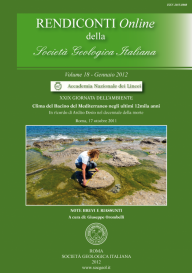
Climate changes at Lake Shkodra (Albania): the last 4500 years
Laura Sadori (*), Giovanni Zanchetta (**), Aurélien Van Welden (***), Ilaria Baneschi (****), Russel Drysdale (°), Marco Giardini (*), Elsa Gliozzi (°°,°°°), Ilaria Mazzini (°°°) & Neil Roberts(°°°°)
(*) Dipartimento di Biologia Ambientale, Università "La Sapienza", Piazzale Aldo Moro 5, 00185 Roma, Italy. E-mail: laura.sadori@uniroma1.it
(**) Dipartimento di Scienze della Terra, University of Pisa, Via S. Maria 53, 56126 Pisa, Italy.
(***) Geological Survey of Norway (NGU), 7491 Trondheim, Norway.
(****) IGG-CNR, sezione di Pisa, Via Moruzzi 1, 56100 Pisa, Italy.
(°) Environmental and Climate Change Group, The University of Newcastle, Callaghan NSW 2308, Australia.
(°°) Dipartimento di Scienze della Terra, Università di Roma Tre, Largo San Leonardo Murialdo 1, 00146 Roma, Italy.
(°°°) IGAG-CNR, Via Salaria Km 29,300, 00015 Monterotondo Stazione (RM), Italy.
(°°°°) School of Geography, Earth and Environmental Sciences, University of Plymouth, Plymouth, Devon, PL4 8AA, UK.
Abstract
Keywords
Get Full Text